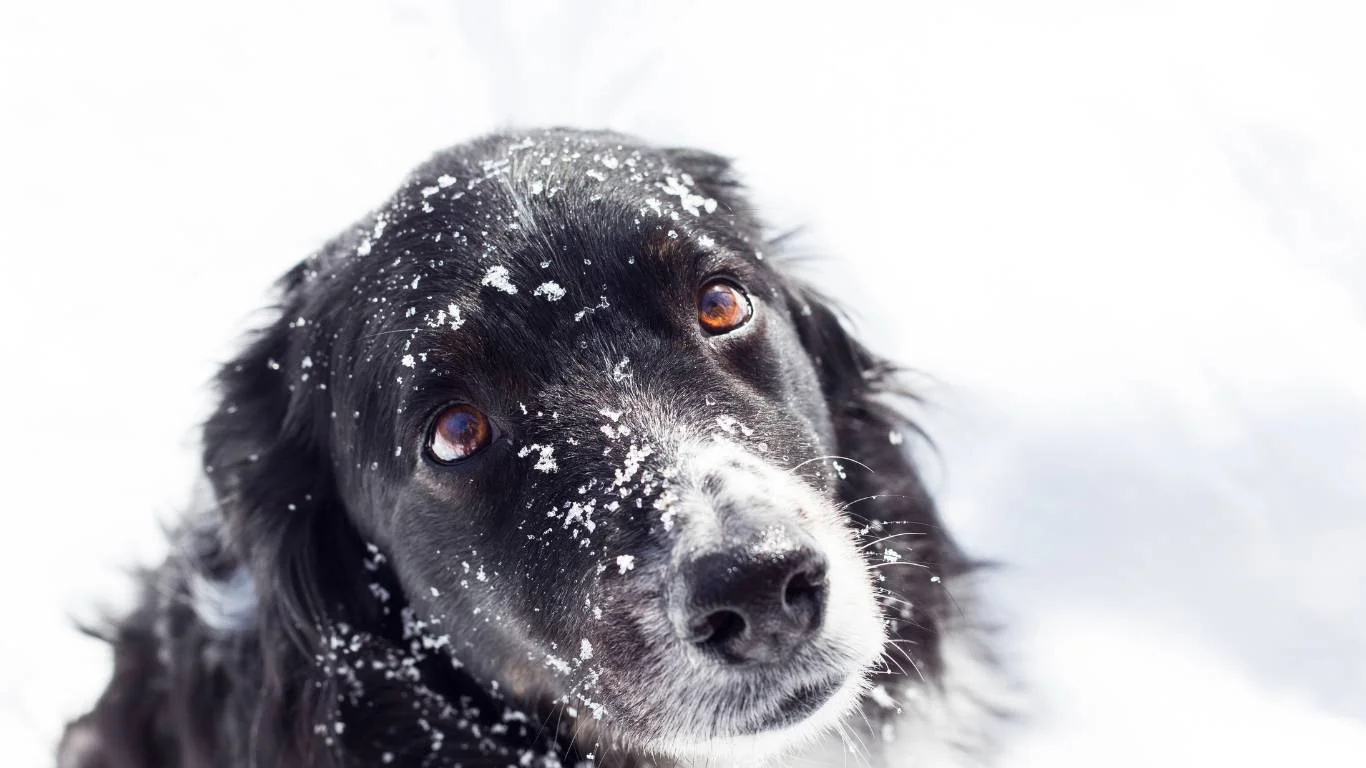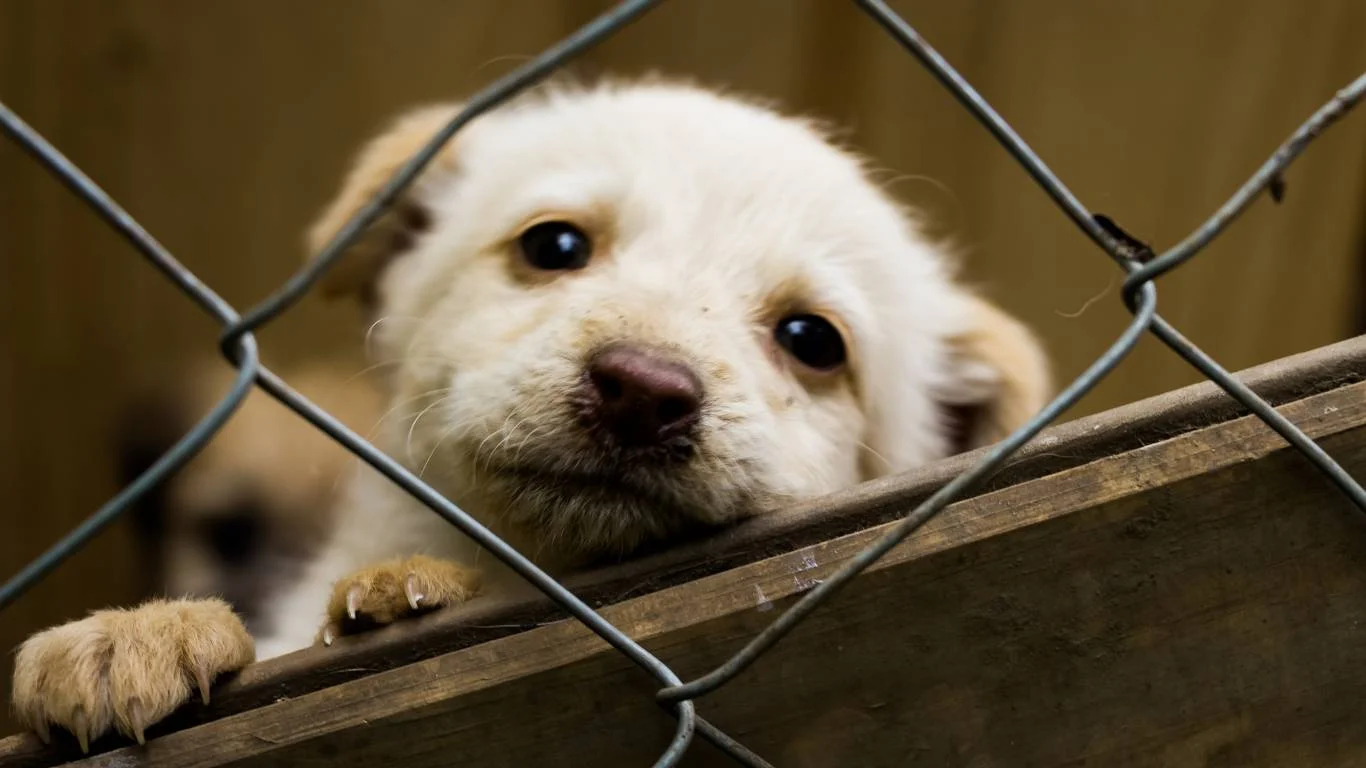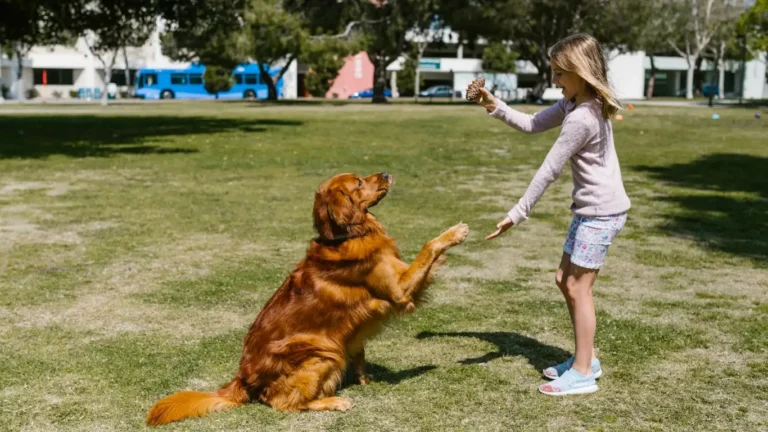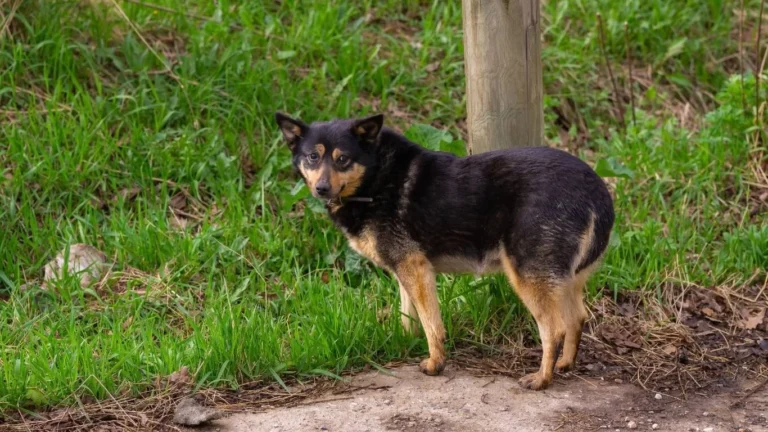What to Do If Your Dog Has a Nosebleed: Quick Guide for Concerned Pet Owners
We all know how unsettling it can be when our furry friends aren’t feeling well, and a nosebleed can be one of those situations that really raises concern. If you’re wondering what to do if your dog has a nosebleed, you’re definitely not alone. It’s one of those things that can seem alarming, but with the right knowledge and action, you can help your dog through it. I’ve been working as a Veterinary Assistant with a special focus on nutrition for quite some time now, and in my experience, the first step is staying calm and taking the appropriate steps to ensure your pup is safe and gets the care they need. Let’s dive into what you should do when you spot a nosebleed in your dog, and how you can take control of the situation in a way that’ll ease both your worries and theirs.
Understanding Dog Nosebleeds: Why They Happen
First, let’s talk about why dogs might get nosebleeds in the first place. It can be easy to jump to conclusions, but the causes are actually pretty varied. From minor irritations to more serious health conditions, there are several potential reasons behind that unexpected nosebleed.
Common Causes of Nosebleeds in Dogs
- Trauma: A common cause of nosebleeds in dogs is trauma. Dogs are naturally curious, and they sometimes bump into things or get into rough play that can injure their noses. This could happen during playtime, a minor accident, or even just a rough encounter with another dog.
- Infections: Upper respiratory infections or sinus infections are another common reason for nosebleeds. Dogs with kennel cough or other respiratory conditions may experience some nasal bleeding.
- Allergies: Allergies can cause inflammation in the nasal passages, which might lead to nosebleeds. If your dog suffers from seasonal allergies, this could be a contributing factor.
- Foreign Bodies: Sometimes, a dog’s nosebleed might be caused by a foreign object that’s stuck in their nasal cavity. Things like grass, seeds, or small debris can find their way in and irritate the delicate nasal lining.
- Tumors or Growths: Though less common, tumors or growths in the nasal passages or sinuses can also cause nosebleeds. This is more likely in older dogs, but it’s something to keep an eye on if the bleeding is persistent or unexplained.
Understanding the cause of the nosebleed is important because it helps determine the next steps for treatment. While most nosebleeds are harmless and can be treated at home, others might require veterinary intervention. If your dog has recurrent nosebleeds or one that doesn’t seem to stop, it’s time to visit the vet.

What to Do Immediately When You Notice a Nosebleed
When your dog first has a nosebleed, your instinct might be to panic. Trust me, I’ve seen pet owners freak out (myself included!) in these situations. But here’s the thing: staying calm is your best ally. The first step is to stop the bleeding, and the good news is, you have a few simple tricks up your sleeve to do just that.
Step 1: Stay Calm and Assess the Situation
The first thing to do when you notice your dog has a nosebleed is to take a deep breath and stay calm. It can be hard, especially when your dog seems distressed, but dogs are pretty sensitive to our emotions. If you’re anxious, they’re going to pick up on that and may become more stressed themselves.
Next, assess the situation. How much blood are you seeing? Is it a small amount that seems to have stopped quickly, or is it a constant flow? Is your dog acting unusually—like having trouble breathing, seeming lethargic, or showing signs of pain? This is important because it helps you decide whether you can handle the situation at home or if you need to head to the vet.
Step 2: Keep Your Dog Calm and Comfortable
If your dog is stressed out or running around, it can make the bleeding worse. Try to keep your dog as calm and comfortable as possible. Bring them to a quiet space, away from loud noises and distractions. Sitting with them on the floor or even lying down with them can help them feel secure while you assess the situation.
If your dog is allowing you to, gently hold their head up to help stop the bleeding. You can also try to put a cool, damp cloth on their nose to soothe the area. If the bleeding is coming from one side, you can gently pinch the opposite side of their nose to apply light pressure.
Step 3: Apply Pressure (If Needed)
If the bleeding is active and doesn’t seem to stop quickly, you may need to apply gentle pressure. You can use a clean cloth, gauze, or even a cotton ball to lightly press against your dog’s nose. The pressure helps to slow or stop the flow of blood. Don’t press too hard; you’re not trying to cause discomfort, just applying enough pressure to stem the bleeding.

When Should You Worry About Your Dog’s Nosebleed?
So, when should you start to worry about your dog’s nosebleed? While most nosebleeds aren’t serious and will stop on their own, there are certain signs that you should watch for. Here are some red flags:
- Persistent Bleeding: If the bleeding doesn’t stop within 5–10 minutes, it’s time to call your vet. Prolonged bleeding could indicate a more serious issue.
- Other Symptoms: If your dog is also showing signs like coughing, sneezing, difficulty breathing, or a decrease in appetite or energy, it could be a sign of an underlying health problem, like an infection or tumor.
- Frequent Nosebleeds: If your dog is getting nosebleeds regularly or the bleeding seems to be a recurring issue, a vet checkup is essential.
As with any health concern, trust your instincts. If you feel something isn’t right, it’s always better to err on the side of caution and have your dog seen by a professional. In some cases, early detection and treatment can make all the difference in their recovery.

When to Take Your Dog to the Vet for a Nosebleed
Even though a lot of nosebleeds are nothing to worry about, there are definitely times when you should get your dog checked out by a vet. I know from experience that it can be tricky to know when something’s truly an emergency, but here are a few key signs that tell you it’s time to get some professional help.
Signs That Indicate a Vet Visit Is Necessary
Sometimes, it’s not so much the nosebleed itself that’s the issue, but what it’s pointing to. If your dog is having a nosebleed along with any of the following symptoms, it’s a good idea to schedule a visit to the vet:
- Bleeding that won’t stop: If you’ve been applying pressure and the bleeding doesn’t slow or stop after 10-15 minutes, don’t wait any longer. Persistent bleeding can be a sign of a deeper problem.
- Blood in the mouth or throat: If you notice blood coming from your dog’s mouth or throat, this could suggest a more serious issue, such as a clotting disorder or severe trauma.
- Difficulty breathing: Any sign that your dog is struggling to breathe—whether it’s rapid, labored, or noisy breathing—should be taken seriously and addressed immediately.
- Lethargy or weakness: If your dog seems unusually tired, weak, or disoriented after a nosebleed, it could point to an underlying health issue that needs attention.
- Frequent or recurring nosebleeds: If the nosebleeds happen often or seem to get worse over time, a vet’s insight is crucial. You might be dealing with a condition that requires ongoing care.
In these situations, it’s best to call your vet right away. They might ask you a few questions over the phone and direct you on whether you should come in immediately or wait to see if it resolves. Trust me, I know it’s easy to worry, but vets are trained to assess these situations quickly and provide the right care.

Possible Underlying Causes of Nosebleeds in Dogs
If your dog’s nosebleed is caused by something more serious, understanding the underlying cause is important for treatment. In my time working as a Veterinary Assistant, I’ve seen several cases where the nosebleeds were linked to more complex health conditions. Let’s explore some of these potential causes.
Upper Respiratory Infections
One of the most common causes of nosebleeds in dogs, especially if they’re accompanied by coughing, sneezing, or nasal discharge, is an upper respiratory infection. These infections, often caused by bacteria or viruses, can inflame the nasal passages and lead to bleeding. If your dog is experiencing other symptoms like a runny nose or watery eyes, it’s a good idea to get them checked by your vet to rule out conditions like kennel cough or canine influenza.
In my experience, these infections are usually mild and treatable with antibiotics or supportive care, but they can cause discomfort, and untreated infections could lead to complications, so don’t hesitate to get medical help if you think this might be the case.
Blood Clotting Disorders
If your dog’s nosebleed is unusually severe or won’t stop, it might be due to a blood clotting disorder. Conditions like Von Willebrand disease, hemophilia, or other clotting issues can cause excessive bleeding from minor injuries. These disorders are typically inherited, and while they can be managed, they require veterinary intervention.
If you suspect your dog might have a clotting disorder (especially if there’s no clear cause for the bleeding), make sure to let your vet know. They’ll likely run some blood tests to diagnose the condition and help you manage your dog’s health going forward.
Tumors and Nasal Cancers
Though less common, tumors in the nasal passages can cause nosebleeds, particularly in older dogs. These tumors can be benign or malignant, but either way, they may require surgical intervention or other treatments to stop the bleeding and manage the condition.
Signs that a tumor might be causing the nosebleed include recurring or constant nasal discharge, bleeding from one nostril only, and sometimes a change in the shape of the dog’s nose. If you notice any of these symptoms, it’s essential to take your dog to the vet for diagnostic testing, such as imaging or biopsies, to get to the bottom of it.

How to Prevent Nosebleeds in Dogs
While some causes of nosebleeds in dogs can’t be prevented, there are a few things you can do to reduce the risk of bleeding, especially if your dog is prone to nosebleeds or if they have pre-existing conditions. Prevention is always better than treatment, and keeping your dog’s health in check can go a long way.
1. Keep Your Dog’s Environment Clean
Dogs that are exposed to dust, pollen, or other allergens can develop inflammation in their nasal passages, which can lead to nosebleeds. Keeping your home clean, minimizing exposure to allergens, and ensuring that your dog isn’t running into sharp objects can help prevent injuries to their nose. Regularly cleaning their bedding and wiping down surfaces that may accumulate dust can reduce respiratory irritants that could lead to nosebleeds.
2. Regular Vet Checkups
Routine checkups are a great way to catch any potential health problems before they turn into serious issues. By keeping up with your dog’s vaccinations, dental care, and overall health monitoring, you can help prevent the kinds of infections or conditions that might lead to nosebleeds. If your dog is older, talk to your vet about screening for potential tumors or blood clotting disorders, as early detection is key.
3. Be Cautious with Rough Play
If your dog loves to play rough or is frequently in environments where they could get hurt (like dog parks), try to keep an eye on their interactions. Bumping into sharp objects, rough play with other dogs, or a bad fall can easily cause trauma to their nose and result in a nosebleed. Keeping playtime safe and monitoring their environment can minimize the chances of injury.

What to Expect at the Vet During a Nosebleed Appointment
If you’ve made the decision to take your dog to the vet for a nosebleed, it’s natural to wonder what might happen during the appointment. As a veterinary assistant, I’ve seen countless appointments for nosebleeds, and I can tell you that while it might feel nerve-wracking, the process is straightforward, and your vet will be there to make your dog as comfortable as possible.
Initial Assessment and History
When you arrive at the vet, the first thing they’ll do is take a full history of your dog’s symptoms. This includes asking you when you first noticed the nosebleed, how long it lasted, whether it’s recurring, and if there are any other symptoms like lethargy, coughing, or changes in appetite. Be ready to share any recent incidents that could have led to the bleeding, such as trauma or rough play, and mention if your dog has any history of respiratory infections or other health problems.
Your vet will also want to know about your dog’s overall health, such as their diet, vaccination history, and any ongoing conditions. This helps them get a clearer picture of what might be going on, as some conditions that cause nosebleeds can be linked to broader health issues.
Physical Examination
Once they’ve gathered the history, the vet will perform a physical exam. This exam typically includes checking the nose and mouth for any obvious signs of injury, swelling, or infection. The vet will also look inside your dog’s nostrils using a specialized tool to examine the nasal passages. If there’s a foreign object lodged in the nose, they may be able to remove it right away.
Along with checking the nose, the vet will also listen to your dog’s heart and lungs, check their gums for signs of anemia (which can be a result of excessive blood loss), and examine the rest of the body to see if any other areas are affected. This holistic approach helps rule out or confirm conditions like blood clotting disorders or underlying infections that might be contributing to the nosebleed.

Diagnostic Tests to Expect
Depending on your dog’s symptoms and the vet’s findings during the physical exam, they may recommend further diagnostic testing. These tests can help pinpoint the cause of the nosebleed and determine the best course of treatment. Here are some of the most common tests your vet might recommend:
1. Blood Tests
Blood tests are a key tool in identifying blood clotting disorders or infections. A complete blood count (CBC) can give the vet insight into your dog’s overall health, including their red and white blood cell counts, which can help diagnose anemia or infection. A coagulation profile can also check how well your dog’s blood clots. If your dog has a clotting disorder, it could explain why they’re experiencing nosebleeds.
2. X-rays or CT Scans
If your vet suspects there’s something inside your dog’s nasal passages or sinuses, they may recommend an X-ray or a CT scan. These imaging tests can help identify foreign objects, tumors, or growths that could be causing the bleeding. While these tests are non-invasive, they may require sedation to keep your dog still during the procedure.
3. Nasal Endoscopy
In some cases, a nasal endoscopy may be necessary. This involves inserting a small camera into your dog’s nose to directly visualize the nasal passages. It’s a minimally invasive procedure that allows the vet to check for foreign bodies, tumors, or other abnormalities that might be causing the bleeding. It’s also helpful for determining the exact location of the issue, which is critical for treatment.
4. Biopsy
If your vet suspects that a tumor or growth is behind the nosebleeds, they may perform a biopsy. This involves taking a small tissue sample from the affected area for examination under a microscope. This can help determine whether the growth is benign or malignant, and guide further treatment.
Treatment Options for Nosebleeds in Dogs
The treatment your vet recommends will depend entirely on the cause of the nosebleed. In many cases, treatment is straightforward and involves managing the underlying condition. However, in more severe cases, surgery or ongoing care may be required. Here’s an overview of potential treatment options:
1. Medication
If an infection is causing the nosebleed, your vet will likely prescribe antibiotics or other medications to treat the infection. If allergies are the culprit, antihistamines or corticosteroids might be recommended to reduce inflammation and control symptoms. In cases of blood clotting disorders, your dog may need medication to help improve their blood’s ability to clot, such as vitamin K or clotting factor replacements.
2. Surgery
If your dog has a foreign object lodged in their nose or a tumor that’s causing bleeding, surgery may be necessary to remove it. In my experience, this is often a last resort, but it’s sometimes the best way to ensure your dog’s health and prevent future bleeding episodes. Surgery may also be required if the bleeding is caused by severe trauma to the nose that requires repair.
3. Supportive Care
In some cases, supportive care can be all that’s needed. This might include keeping your dog calm, providing fluids, or simply monitoring them closely. If your dog is losing blood or feeling weak from the nosebleed, your vet may recommend IV fluids or blood transfusions to support their recovery.
4. Long-Term Management
If your dog has an ongoing issue, such as a blood clotting disorder or chronic sinus infections, your vet will discuss long-term management options with you. This could include dietary changes, regular monitoring, and preventive treatments to keep your dog’s condition under control.

Conclusion
Dealing with a nosebleed in your dog can be a stressful experience, but with the right knowledge and care, you can handle the situation calmly and effectively. Whether it’s a minor injury, an infection, or something more serious, understanding the cause and getting your dog the proper care is key to helping them recover. Always remember that when in doubt, it’s better to consult with your vet to ensure your dog stays healthy and happy.
By following the tips and guidelines in this article, you can feel confident in your ability to respond to a nosebleed and provide your dog with the care they need. If you’re ever unsure, don’t hesitate to reach out to your vet for advice—they’re there to help both you and your furry companion stay safe and well.
Disclaimer: The information provided in this article is for informational purposes only and is not a substitute for professional veterinary advice. Always consult with a veterinarian for concerns regarding your dog’s health and treatment options.
For more information on dog health and care, check out resources like PetMD or the American Kennel Club.






